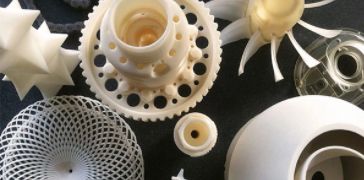What is 3D printing?
3D printing, also called additive manufacturing, is a family of processes that produces objects by adding material in layers that correspond to successive cross-sections of a 3D model. Plastics and metal alloys are the most commonly used materials for 3D printing, but it can work on nearly anything—from concrete to living tissue.
First you need the appropriate 3D printing CAD software to make a digital model of your 3D design on your computer. To actually "print" and produce your 3D model, you'll need some "ink." Luckily for all of those 3D printing hobbyists out there, any material that can be reduced to powder form can be used as 3D printer "ink."
Most commonly, 3D printers print objects made from ABS plastic and other thermoplastic materials, mostly because plastic is the cheapest material to work with.
So how does 3D printing work?
Do you just load your ink cartridge, press a button and wait a couple seconds for your "print job" to roll out like you do with a desktop printer? Not exactly. 3D printers print from the bottom up, adding layer on top of layer until your design is complete. After you make your 3D model on your computer and send it to your 3D printer, it might take your 3-D printer hours or even days to process your design and "print out" your 3D object, depending on the size and complexity of your design and the quality of your 3D printer.


